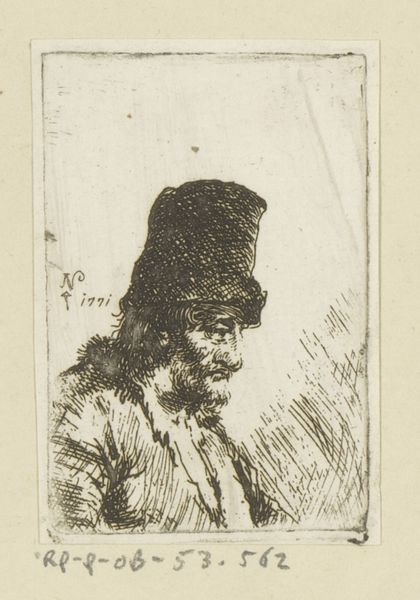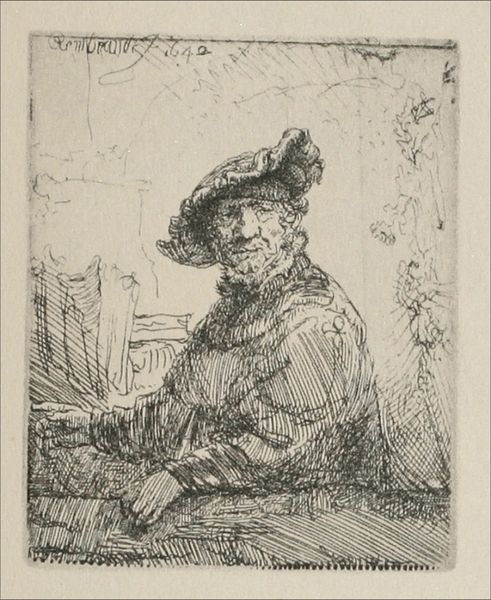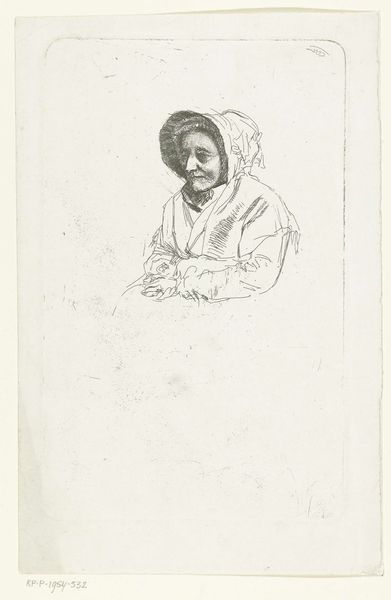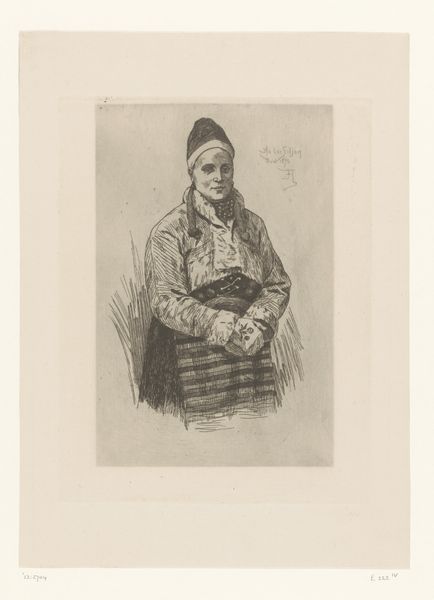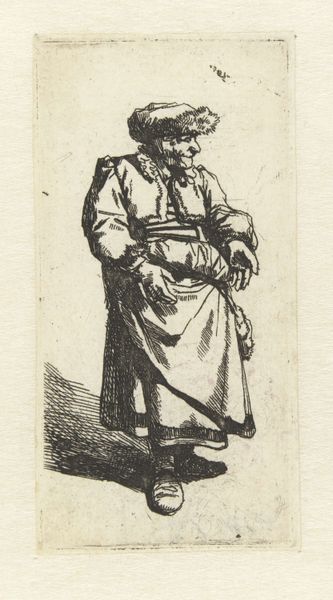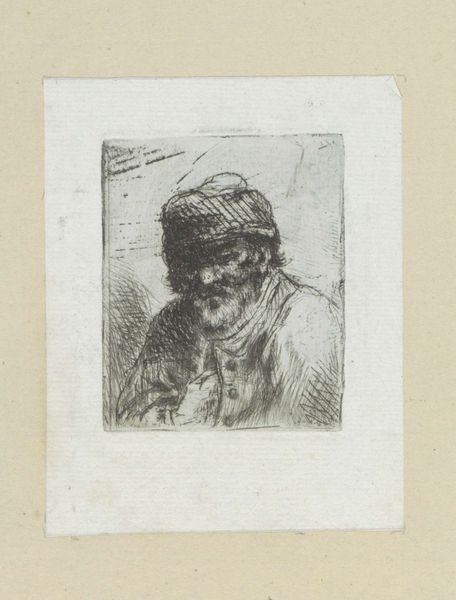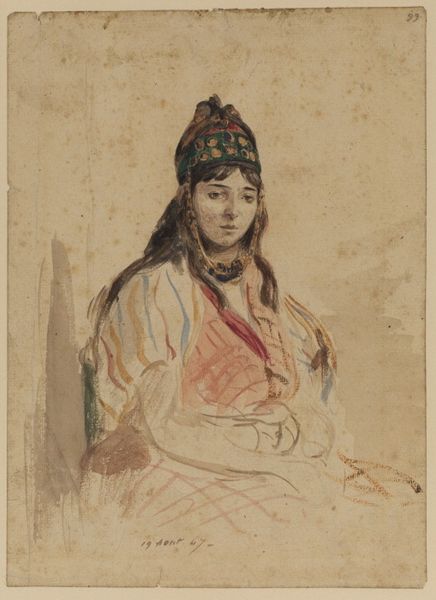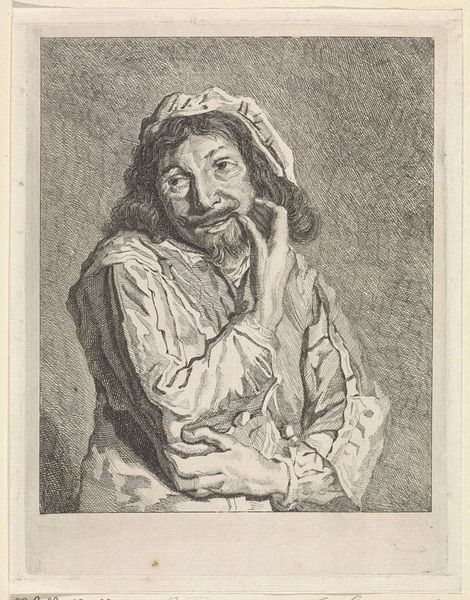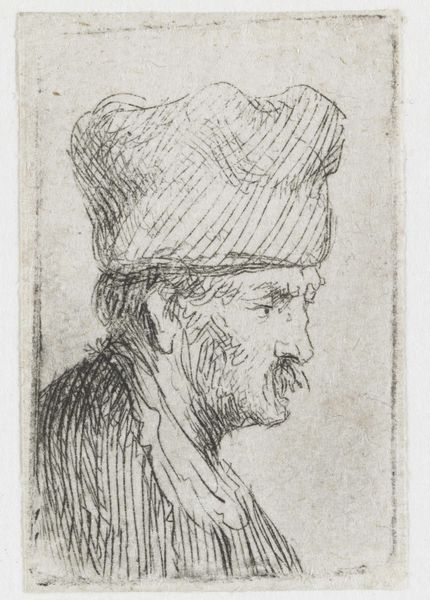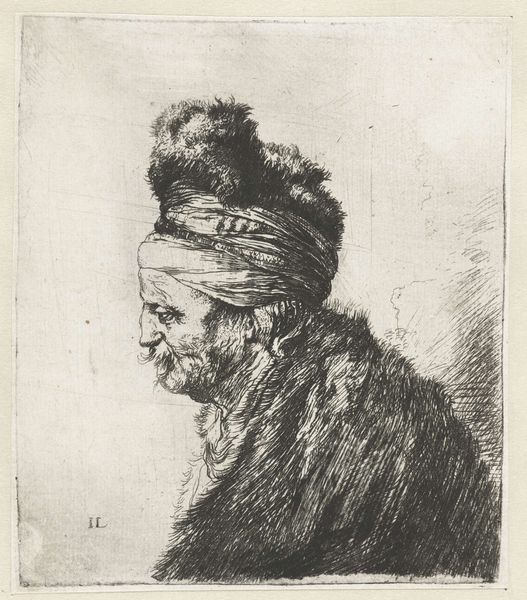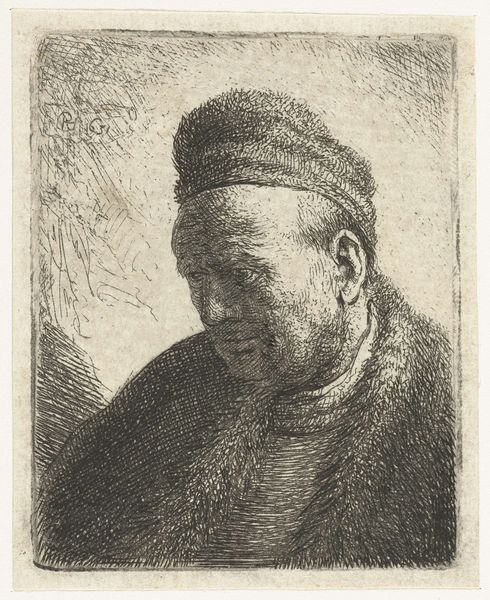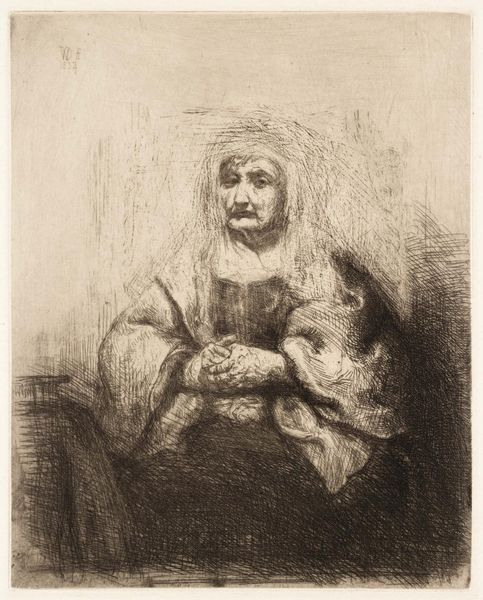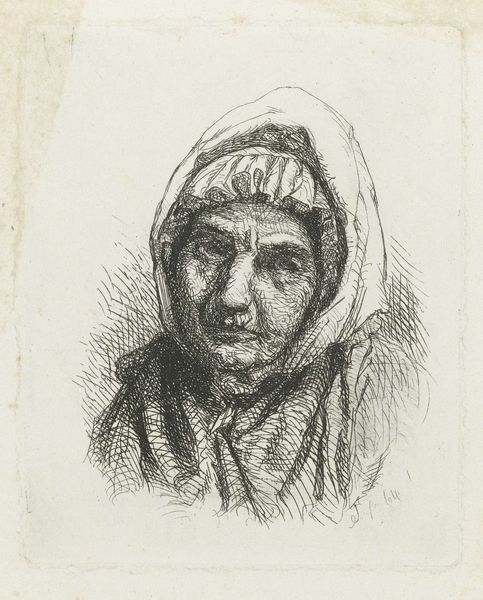
Copyright: Public Domain: Artvee
Curator: Sobering. There’s a rather heavy feel, not dismal exactly, but certainly subdued in tone and weight. Editor: Indeed. We are looking at James Abbott McNeill Whistler’s etching, “The Tinsmith”, completed sometime between 1856 and 1858. Though titled "The Tinsmith", we seem to be viewing a seated woman rather than the tradesman suggested by the title. This might reveal insights into 19th-century working-class communities— perhaps this woman is the tinsmith's wife or another worker within the domestic sphere? Curator: An intriguing notion. Observe, however, the contrasting rendering of the subject against the rather loosely worked background. It’s less about social documentation, more about formal arrangement, isn’t it? Consider the balance created by the figure’s position. Her forward-facing aspect and strong symmetrical construction work to stabilize her amidst the scrawling lines on both sides, which might represent surrounding objects in the worker’s cluttered or active environment. Editor: Perhaps you're right; but what does that mass behind her even signify? It feels more like a looming shadow than a representation of physical space, especially given its heavy concentration of deeply bitten lines that darken one side of the work significantly. Whistler uses etching not only to depict, but also to obscure. Is this an effort to reflect something darker? Curator: Well, it's certainly provocative! Looking closely at the rest of the subject, what strikes me most is how the hatching suggests volume, while also flattening the figure, especially in the bodice of her dress and her headscarf. It brings out the inherent contradiction of this art: that of creating form out of something primarily linear and relatively lacking in tone. Editor: What's truly captivating about this piece is the ambiguity it holds. The identity of the subject, her social status, even the intended meaning are all shrouded in mystery. Whistler invites us to interpret, to project our own understandings of 19th-century labor onto this enigmatic portrait. Curator: A fruitful debate. Seeing "The Tinsmith" again, through a discussion on its materiality and representation, reminds me of Whistler's dedication to harmonizing technique and social statement. Editor: Precisely. Thinking on "The Tinsmith" now makes me aware of the formal and cultural dynamics between this compelling etching and us, as viewers separated by time.
Comments
No comments
Be the first to comment and join the conversation on the ultimate creative platform.

